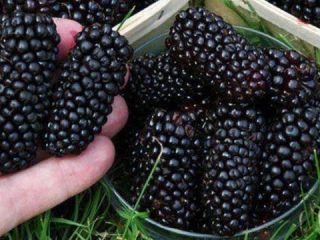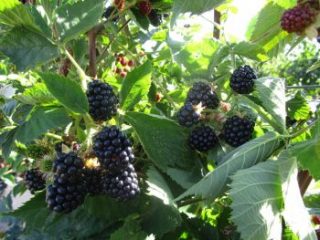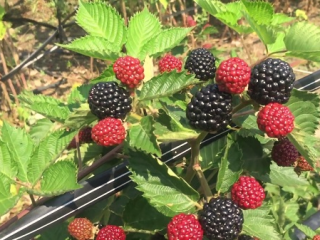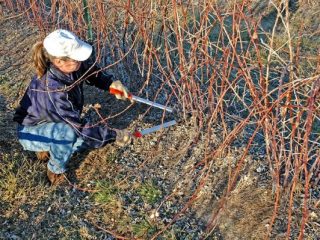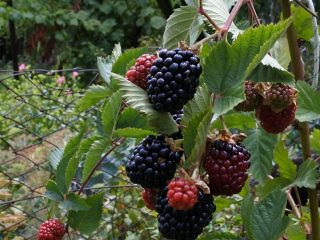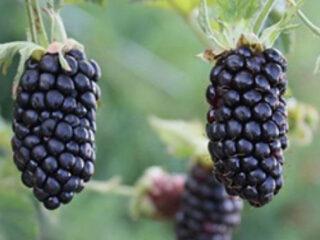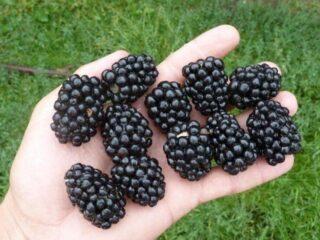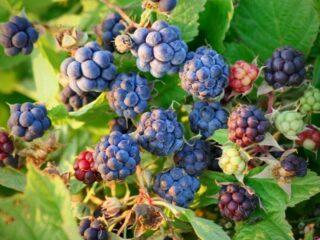Content
Propagation of blackberries by apical layering is used not only by experienced, but also by novice gardeners. After all, this is one of the easiest ways to obtain shrub planting material without much difficulty. For the procedure to be successful, it must be carried out within a favorable time frame and certain rules must be followed. This will subsequently allow young plants to easily tolerate separation from the mother bush and quickly adapt to a new location.
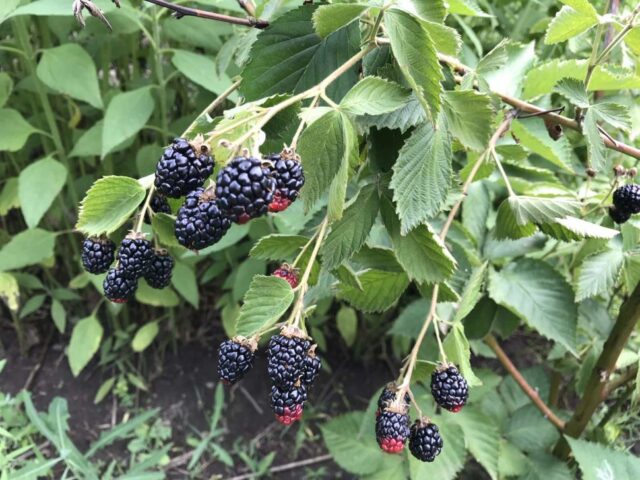
Blackberry seedlings grown from apical cuttings fully retain their varietal properties
Advantages of blackberry propagation by layering
This method of propagation can be easily mastered even without many years of gardening experience. However, to obtain planting material, you must have at least one adult blackberry bush of the variety you like. Experts note that when using apical layering for propagation, the yield of the shrub does not decrease.
This method consists of stimulating root formation on the shoots until they need to be separated from the bush. This allows the seedling to fully develop due to nutrition from the mother plant, which accelerates its development.Such blackberry bushes can easily be transplanted to a permanent location in the future, since they receive all the nutritional components at the initial stage of growth.
The main advantages of this method of vegetative propagation:
- the opportunity to obtain a lot of planting material;
- new plants are adapted to the climate of the growing region;
- 100% success if the rules are followed;
- simplicity of the procedure;
- minimum amount of time spent;
- rapid survival of young bushes.
Timing of blackberry propagation by layering
To properly propagate blackberries by layering, you need to know when it is best to do this. Only by observing the deadlines can you eliminate the possibility of death of young seedlings.
It is recommended to use the apical layering method for propagating garden blackberries throughout the fall, until frost occurs. You can start the procedure from the beginning of September and continue until the end of October, depending on the climatic conditions of the region.
It is also possible to propagate blackberries by digging up the vines before winter. In this case, it is recommended to carry out the procedure after leaf fall. But then the plants need careful shelter. Otherwise, in a snowless winter, the seedlings may die. With this method of propagation, the apical layers will begin to actively develop with the arrival of spring warmth.
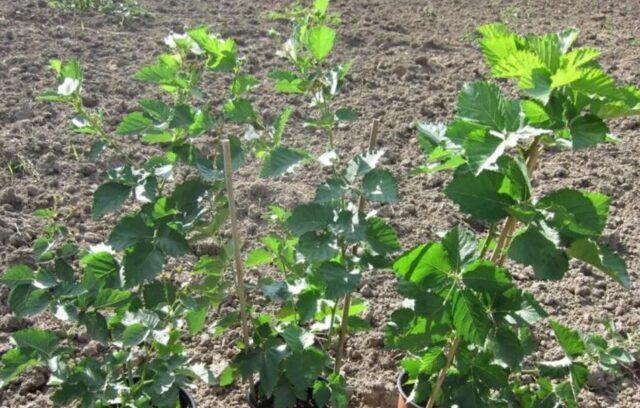
During the season you can get up to 5-8 young bushes from one plant
How to propagate garden blackberries by layering in the fall
Propagation of garden blackberries by apical layering does not require special skills.But at the same time, it is recommended to follow certain rules, the implementation of which directly determines the rate of development of seedlings in the future and the level of their immunity to adverse external factors.
For propagation, it is better to use young one-year-old shoots without signs of pests and diseases. Because they have high life potential, and this will speed up their rooting. It is not recommended to use fruit-bearing pagons for propagation, since they take a long time to take root, and the resulting seedlings have low immunity.
It has been noticed that gardeners most often use the method of propagation by apical layering for thornless blackberries, since the price of planting material is still quite high, and this type of crop does not form basal shoots. Therefore, using this propagation method, you can not only increase the number of shrub seedlings, but also save significantly.
It was also noted that in this species, if not tied to a support in a timely manner, the tops of shoots in contact with the ground are capable of taking root independently. And if you create favorable conditions, the process will speed up significantly.
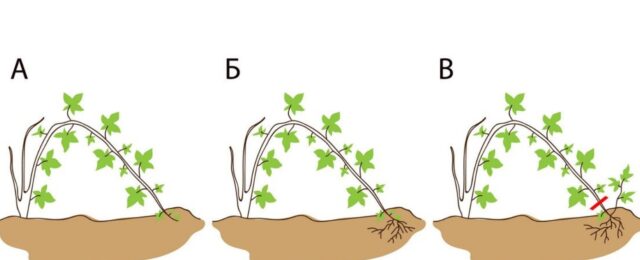
Blackberries can be propagated from apical shoots annually.
Soil preparation and deepening
For successful rooting of blackberries by layering, it is necessary to prepare the soil near the mother bush in advance. It should not only be nutritious, but also have a high level of air and water permeability. After all, this is necessary for the development of a strong root system in young seedlings.
Soil preparation is also important for further plant replanting. After all, their roots are thin and stringy; in order not to damage them when separating the cuttings from the mother plant, the soil must be quite loose.
Before carrying out the procedure, dig up the soil around the bush at a distance of 1-1.5 m. It is also necessary to add a large amount of organic matter to the soil at the rate of 10 kg of humus for each square meter of area. This will provide adequate nutrition to young plants and also helps retain moisture in the soil.
Also add additional wood ash to the soil at the rate of 200 g per 1 square meter. m or 30 g of superphosphate, 25 g of potassium sulfide for the same area. These fertilizers accelerate the process of root formation on the apical layer of blackberries.
In case of increased soil density, it is necessary to add sand at the rate of 5 kg per 1 sq. m. This will significantly increase the breathability of the soil.
Escape bending
It is recommended to prepare blackberry shoots for apical layering during the season. When they grow to a height of 40-45 cm, they should be pinched. This stimulates the development of lateral branches. After they grow to half a meter, repeat pinching. This will increase the number of well-developed potential cuttings by autumn.
Algorithm of actions:
- Cut off the top of the blackberry shoot by 10 cm to stimulate root formation of the shoot.
- Bend it to the ground in an arc and mark the point of contact.
- Make a hole 10-15 cm deep with vertical walls, except for the side facing the queen cell, as it should remain flat.
- Bend the shoot again into the already prepared recess and secure it with a bracket.
- Cover the top with soil, compact the soil and water generously.
If it is necessary to transport young seedlings in the future, you can root the blackberry shoot in a pot that has previously been deepened into the soil. But in this case, the plant needs frequent watering, since moisture from the soil will evaporate faster.
In more detail, how to properly propagate blackberries by apical layering is shown in the video:
Separation from an adult plant
For successful rooting of cuttings, it is necessary to control soil moisture. Therefore, it is recommended to water regularly as the top layer of soil dries. But it is also important to prevent the soil from becoming waterlogged to eliminate the possibility of soil fungi developing.
If all recommendations are followed, young blackberry shoots will appear in three weeks. As their height increases, seedlings need to be earthed up to develop a powerful root system. It is recommended to do the procedure 2-3 times.
You can separate blackberry seedlings grown from apical cuttings when they are strong enough. In this case, you need to cut off part of the shoot with pruning shears and carefully dig up the young bush without disturbing the earthen lump on the roots.
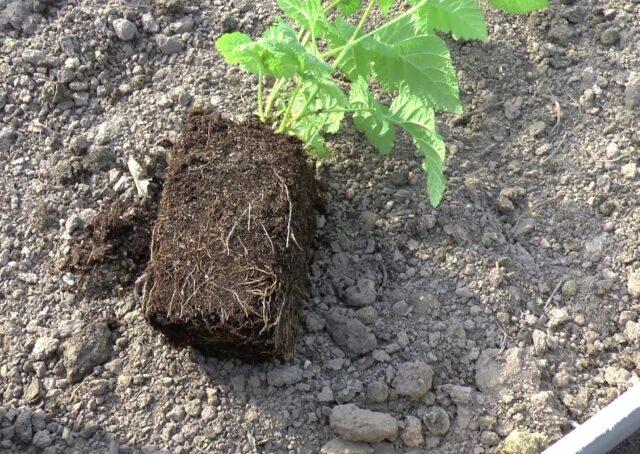
Seedlings need to be separated only if they have a well-developed root system
If the autumn turned out to be warm and humid, then the transplant can be done before winter, but at least three weeks before the onset of frost. Otherwise, the plants will not be able to adapt to the new place and will freeze out. If it is not possible to transplant plants in the fall, the procedure should be postponed until spring. The optimal period for separating seedlings from the mother bush is the period after the snow melts, but before the start of active growing season. In this case, the seedlings will bear fruit already in the current season.
When planting plants in a permanent place, you need to add humus and wood ash to the hole.And also water them generously and mulch the root circle with peat. In the future, the seedlings require standard care, as for adult blackberry bushes.
Conclusion
Propagation of blackberries by apical layering is the most affordable way to obtain planting material of the crop variety you like without much difficulty. To do this, all you need is the desire of the gardener and compliance with simple rules of care. And then the young bushes will very soon delight you with a generous harvest of delicious berries.
